This was published 8 years ago
San Diego Zoo: Koalafornia and Early Morning with the Pandas
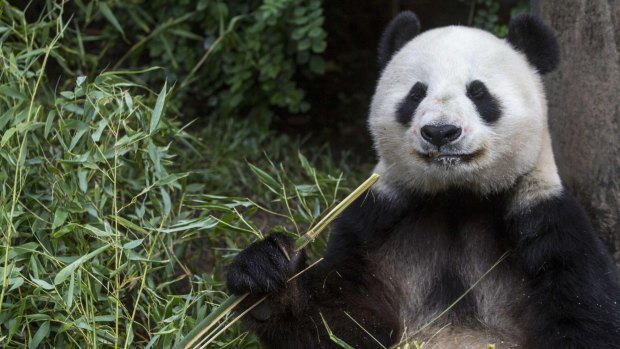
Giant panda Bai Yun enjoys munching on bamboo.Credit: Alamy
There's a celebrity close by. People shuffle for a closer look, cameras ready. I've heard rumours before about this privileged creature: the mist machines and heaters to get the hotel climate just right; the food, specifically grown, shipped in and prepared; the entourage of helpers and the rare, but occasional refusal to perform on cue at public events. The public clusters around to snap selfies with him, but the San Diego Zoo's ambassador and biggest star, Burley the Koala, sleeps through the fuss.
San Diego Zoo's newest attraction, Koalafornia, has been a huge hit since it opened in 2013. The crowd's enthusiasm for the koala exhibit surprised me, but the marsupials have been part of the Zoo's story since it opened in Balboa Park 99 years ago with the animals "leftover" from San Diego's 1915 exposition. Today, the San Diego Zoo's koala colony has grown to become the largest breeding colony of koalas outside Australia, with the zoo actively involved in research and conservation efforts.
However, as cute as Burley is (particularly when he decides to grunt at the crowd), it's the real bears I've come to see this morning: pandas. San Diego Zoo's two-hour Early Morning with the Pandas tour allows exclusive access behind-the-scenes before the zoo opens to the public.
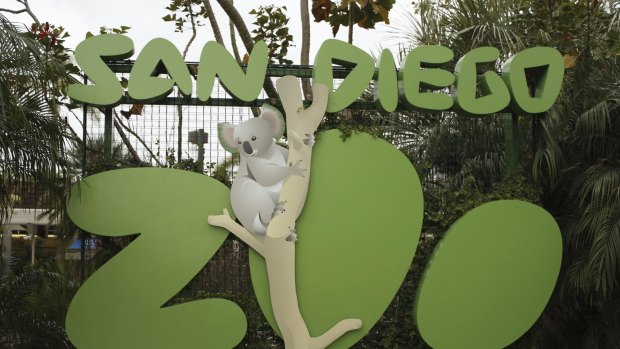
San Diego Zoo has the largest koala-breeding colony outside Australia.Credit: iStock
With only 1864 giant pandas left globally, the zoo's breeding program has been one of the most successful in the world, thanks in part to Bai Yun, who has given birth to six panda babies in captivity (five of whom were naturally conceived). Bai Yun is fed 18 different types of bamboo, but while we watch, the grubby white and black panda nonchalantly tosses stalks away – according to keepers, she's a fussy eater.
Her mate, Gao Gao, who is snacking in a different pen, is famous for his own reproductive trick. A smaller bear, he does a little handstand to scent mark – he knows females like taller males.
The panda-breeding program is one of the many global conservation programs the zoo is part of. The San Diego Zoo has always had a strong history when it comes to animal welfare, being one of the first to set up open enclosures that mimicked the animal's natural environment and emphasised enrichment activities.
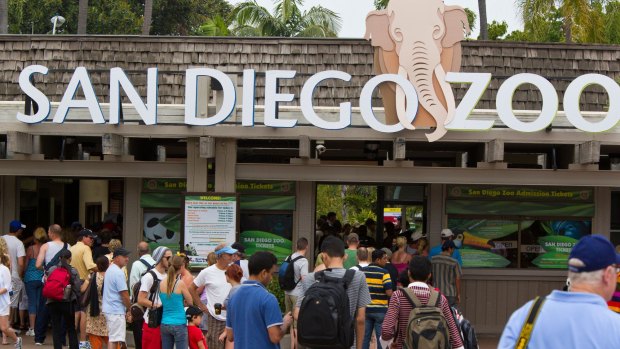
Visitors enter the front of the San Diego Zoo.Credit: Alamy
Today, the San Diego Zoo Institute for Conservation Research supports over 100 conservation field projects in 35 countries. Success stories include the pandas, but also the California condors breeding program, which helped bring the population back from just 22 wild birds in the 1980s to 430 birds in 2015.
As much as the zoo is involved in conservation, it is also a refuge. Piling out of our buggy, we drive through the zoo and take the back door into the Conrad Prebys Elephant Care Centre, part of the Elephant Odyssey exhibit that opened in 2009.
Grazing out in the paddock is one of San Diego Zoo's quieter success stories. Mila, an African elephant, faced an uncertain fate after crushing her keeper in a tragic accident in New Zealand. She was flown to Los Angeles and given a second chance at the Zoo, where she has settled in with her new companions.
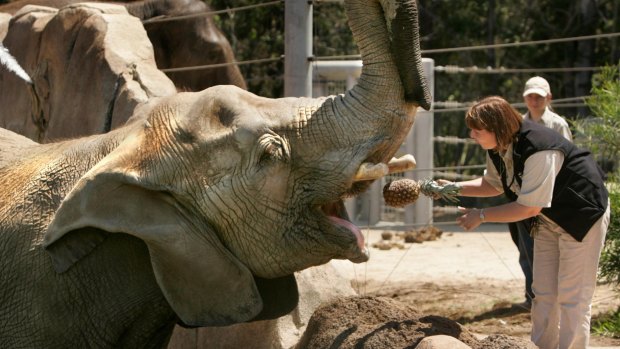
Tembo the elephant loves pineapples.Credit: Alamy
In many respects the care centre is almost like a retirement village for elephants. We view the quarantine and medical rooms set up for elephant procedures, and visit the most important room in the building, the elephant kitchen. Inside, popcorn makers, industrial tubs of beet pulp, oversized jars of peanut butter and boxes of pineapple and cucumber are stacked below a list of what each elephant eats.
We emerge from the keeper's area to see Debbie, one of the older elephants, having her weekly pedicure. Her keeper subtly motions, and the elephant wiggles her ears and waves her trunk, receiving a small treat as a reward. Far from a cheap circus trick, the enrichment activity is designed to keep her stimulated and distracted while her foot is looked at.
From there, we explore the zoo on our own, opting to take the Skyfari over the zoo's traditional double-decker bus tour. Up in the air, we're able to get a view of the magnificent, 40-hectare grounds. The zoo is stretched across a canyon with botanical gardens planted through, giving us a clear view of the gorilla enclosure and panda exhibits, grizzly bears and monkeys. Looking at our map, we're spoiled for choice, with thousands of animals to visit.
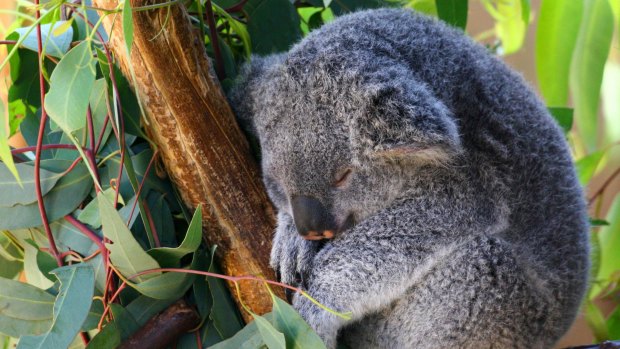
A koala takes a nap at San Diego Zoo.Credit: Alamy
However, just an hour's drive from the Zoo is an even bigger menagerie; The zoo's sister site, the San Diego Safari Park. The 728-hectare park operates as more of a wildlife sanctuary, with expansive grounds for all the 2,600 animals. After such a great experience at the zoo, we're disappointed to not have time to visit the Safari Park. But it's just another incentive to return.
TRIP NOTES
MORE INFORMATION
GETTING THERE
Virgin Australia flies from Sydney to Los Angeles with sale fares from $1511; see virginaustralia.com. The Pacific Surfliner train connects Los Angeles with San Diego, from $47; see amtrak.com.
STAYING THERE
HI San Diego Downtown has rooms with breakfast from $120; see sandiegohostels.org.
VISITING THERE
The San Diego Zoo is located in Balboa Park, while the San Diego Safari Park is located an hour away in Escondido. Both are open 365 days a year. Entry is $60 for adults and $48 children or $106/$84 for a two-day pass. Early Morning with Pandas costs $115, including admission; see sandiegozoo.org.
The writer was a guest of the San Diego Tourism Authority and HI San Diego.
FIVE OTHER ZOO SUCCESS STORIES:
TARONGA
Set to celebrate its 100th Anniversary in 2016, Taronga is involved in important conservation projects including the Tasmanian Devil breeding program. See taronga.org.au.
ASSINIBOINE PARK
Located in Winnipeg, the new Journey to Churchill polar bear exhibit offers a second chance to orphaned polar bear cubs. See assiniboinepark.ca.
BRONX
The zoo successfully reintroduced the Kihansi spray toad back into its natural habitat after the species was declared extinct in the wild. See bronxzoo.com.
PHOENIX
From a breeding herd of nine animals in the 1960s, the Phoenix Zoo helped revive the endangered Arabian Oryx. See phoenixzoo.org.
WESTERN PLAINS
The Dubbo Zoo's Black Rhino breeding program has seen 11 Black rhinos born since 1996. See taronga.org.au.
Sign up for the Traveller Deals newsletter
Get exclusive travel deals delivered straight to your inbox. Sign up now.